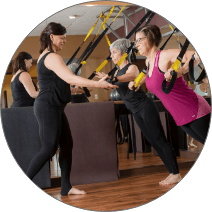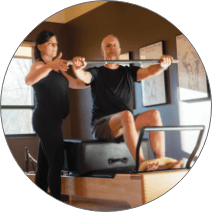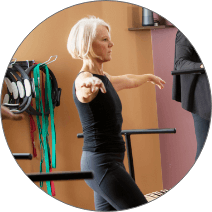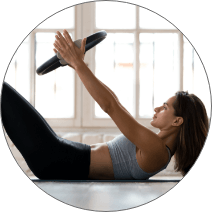5 Myths About Pilates
5 Common Myths About Pilates
There are many misconceptions about what Pilates is and who Pilates is for. Pilates is a broad word for what pilates can mean for you and your lifestyle goals. Pilates can and should be part of a healthy lifestyle, whether you practice regularly or use it as a small part of your weekly fitness routine. Personally, everything I do in my fitness routine is based off the Pilates principles.
Some common myths about Pilates.
1. Pilates Is For Woman and Dancers
Pilates was originally developed by a man, Joseph Pilates, who devoloped his program for a wide variety of people from the sickly to athletes. A famous boxer influenced his move to the United States. Unfortunately, dancer’s were first to find pilates and adopted it “as their own”. Pilates is often marketed towards women. The majority of private clients at Mindful Movements are men who love and dedicate time each week to practice regularly.
2. Pilates Is Just Stretching
While Pilates does involve stretching, it is also a form of strength training that focuses on building core strength and control of the body’s movements. Strength gains come from the added resistance of the springs and the body weight needed to control all the exercises in the Pilates Method. The secret about Pilates is the more you practice the harder it gets because you become more connected to working from the deep core of the body. When this happens you are more stable and your natural flexibility and ease of movement comes out.
3. Pilates Is Easy
While Pilates is low-impact and gentle on the joints, it is not easy. Pilates exercises require concentration and control, and learning how to work from the inside out. Exercises can be challenging for people of all fitness levels.
4. Pilates Is Like Yoga
Pilates and yoga are both popular forms of exercise that focus on mind-body connection, balance, and flexibility. However, there are several key differences between the two practices..
Yoga often incorporates meditation and spiritual practices, Pilates is purely a physical workout with emphasis on focusing deeply on how your body works. Pilates focuses on strengthening the core muscles, improving posture, and increasing overall body strength and flexibility. It also emphasizes proper breathing techniques and controlled movements.
Pilates exercises are typically performed on a mat or with equipment such as the Reformer, while yoga poses can be performed on a mat, with props or without props.
Pilates and yoga have numerous health benefits and can be excellent forms of exercise and are great compliments to one another, they are distinct practices with different origins, philosophies, and focuses.
5. Pilates Is For Fit People
Pilates can be modified to suit people of all ages and fitness levels. In fact, it is often recommended as a form of exercise for older adults, people with chronic pain or injuries, and pregnant women. Qualified pilates teachers are trained to “meet you where you are” in your body and to teach you the fundamentals of the movements to make it a practice for everyone.
By dispelling these myths, it is clear that Pilates is a versatile and accessible form of exercise that can benefit individuals of all ages and fitness levels. Whether you are looking to improve your posture, increase flexibility, strengthen your core, or simply enhance your overall well-being, Pilates has something to offer. So, let go of the misconceptions and give Pilates a try – you might just be surprised by the transformative impact it can have on your mind and body.






